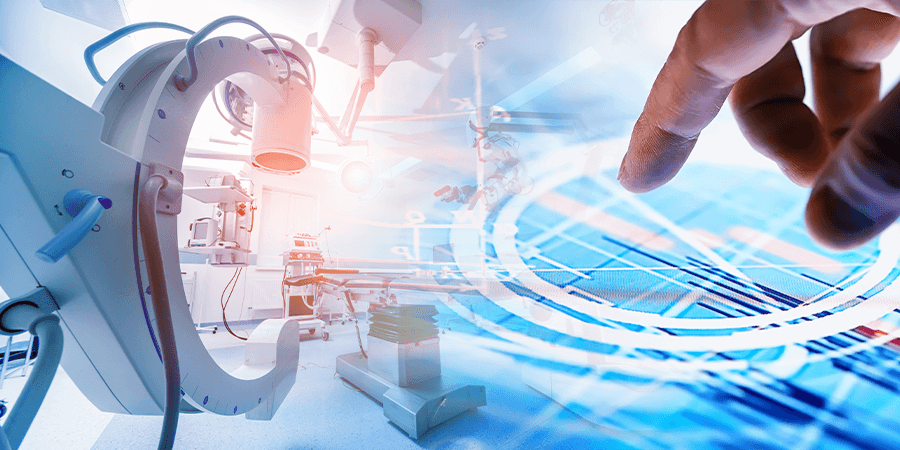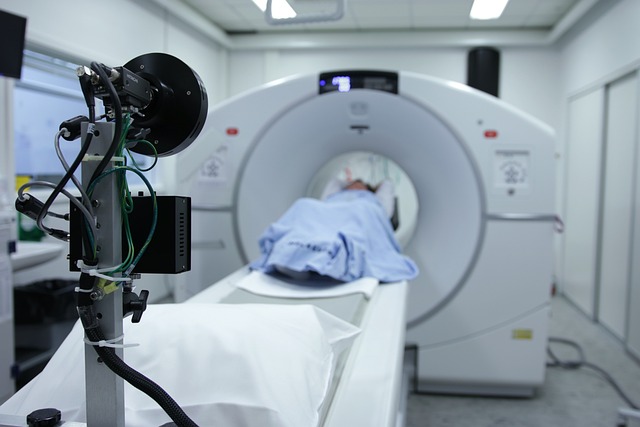
Medical imaging has revolutionized the field of diagnostics, allowing healthcare professionals to visualize the internal structures of the human body with unprecedented clarity.
This article explores the innovative advancements in radiology imaging techniques and advanced medical imaging modalities, shedding light on their crucial role in accurate diagnosis.
Additionally, it delves into the wonders of 3D medical imaging and speculates about the future possibilities of this rapidly evolving field.
Join us as we embark on a journey through the world of medical imaging and uncover its immense potential for improving patient care.
Key Takeaways
- Radiology imaging techniques provide non-invasive visualization of internal structures, aiding in disease detection and treatment planning.
- Advances in medical imaging modalities, such as hybrid imaging techniques and artificial intelligence, enhance the accuracy of diagnosis and offer personalized treatment strategies.
- 3D medical imaging allows for detailed visualization and examination of anatomical structures, facilitating preoperative planning and surgical simulations.
- The integration of AI algorithms and nanotechnology in medical imaging holds tremendous potential for improving diagnostic accuracy, image quality, and targeted therapies in the future.
Exploring Radiology Imaging Techniques
Radiology imaging techniques encompass a wide range of methods that allow for non-invasive visualization of internal structures in the human body. These techniques have revolutionized the field of diagnostics by providing detailed images that aid in accurate disease detection and treatment planning. However, it is important to acknowledge the potential radiation risks associated with certain imaging modalities, such as computed tomography (CT) scans. While the benefits outweigh the risks in most cases, healthcare professionals must exercise caution and only use these techniques when necessary.
Image interpretation plays a crucial role in radiology imaging. Radiologists are trained to analyze and interpret these images, providing valuable insights into a patient's condition. They meticulously examine various anatomical structures, looking for abnormalities or signs of disease progression. With advancements in technology, image interpretation has become more precise and efficient, allowing for earlier detection of diseases and improved patient outcomes.
In conclusion, radiology imaging techniques have greatly enhanced our ability to visualize internal structures without invasive procedures. However, it is essential to be aware of potential radiation risks associated with some modalities and prioritize patient safety at all times. The expertise of radiologists in image interpretation continues to play a crucial role in diagnosing diseases accurately and improving patient care.
Advances in Medical Imaging Modalities
Advancements in the field of medical imaging have led to the development of various modalities that enhance diagnostic capabilities and improve patient care. These innovative techniques have revolutionized the way healthcare professionals diagnose and treat diseases.
Here are three notable advances in medical imaging modalities:
Hybrid Imaging Techniques: Combining two or more imaging modalities, such as positron emission tomography (PET) with computed tomography (CT), allows for a comprehensive evaluation of anatomical structures and metabolic activity. This fusion of different technologies provides a more accurate diagnosis, leading to better treatment decisions.
Artificial Intelligence in Medical Imaging: AI algorithms can analyze vast amounts of medical images quickly and accurately, aiding radiologists in detecting abnormalities with high precision. From identifying tumors to analyzing tissue textures, AI has the potential to significantly improve diagnostic accuracy and reduce human error.
3D Medical Imaging: Traditional two-dimensional images are limited in their ability to fully visualize complex anatomical structures. Three-dimensional imaging techniques, such as magnetic resonance imaging (MRI) or computed tomography angiography (CTA), offer detailed representations that allow for more precise surgical planning and better understanding of disease processes.
These advancements demonstrate how technology is rapidly evolving within the field of medical imaging, ultimately improving patient outcomes by enabling earlier detection and personalized treatment strategies.
The Crucial Role of Imaging Technology in Diagnostics
The use of imaging technology plays a crucial role in the accurate diagnosis and treatment planning of various medical conditions. Imaging technology has witnessed significant advancements in recent years, leading to improved diagnostic accuracy and patient outcomes.
One of the key trends in imaging technology is the development of more advanced modalities, such as magnetic resonance imaging (MRI), computed tomography (CT), and positron emission tomography (PET). These modalities offer high-resolution images that enable healthcare professionals to visualize anatomical structures and detect abnormalities with greater precision.
Additionally, the integration of artificial intelligence (AI) algorithms into imaging technology has further enhanced diagnostic capabilities by enabling automated image analysis and identification of subtle abnormalities.
The impact of imaging technology on diagnostics cannot be overstated, as it provides vital information for clinical decision-making, guiding treatment plans, monitoring disease progression, and assessing treatment response.
With ongoing technological advancements, we can expect even more innovative applications and improvements in imaging technology in the future.
Unveiling the Wonders of 3D Medical Imaging
Three-dimensional medical imaging is a powerful tool that allows for detailed visualization and examination of anatomical structures. This advanced imaging technique provides healthcare professionals with a comprehensive understanding of the patient's condition, enabling more accurate diagnostics and treatment planning.
One significant application of 3D medical imaging is in the field of 3D printing. By converting the digital images into physical models, physicians can create patient-specific replicas of organs or body parts, facilitating preoperative planning and surgical simulations.
Additionally, the integration of virtual reality technology with 3D medical imaging has further enhanced the diagnostic capabilities. Virtual reality allows clinicians to immerse themselves in a three-dimensional environment, providing a more intuitive way to explore and interact with complex anatomical structures.
As technology continues to advance, we can expect even more exciting applications and advancements in the field of three-dimensional medical imaging.
Speculating the Future of Medical Imaging
One potential direction for the future of imaging technology involves the integration of artificial intelligence (AI) algorithms to enhance diagnostic accuracy and improve patient outcomes. AI has already shown promise in various fields, including medical imaging, with the ability to analyze large amounts of data quickly and accurately. By incorporating AI into medical imaging systems, radiologists can benefit from automated image interpretation, reducing human error and improving efficiency.
Furthermore, nanotechnology holds great potential for the future of medical imaging. Nanoparticles can be used as contrast agents to improve image quality and provide more detailed information about tissues and organs. Additionally, nanoscale devices could be employed to deliver targeted therapies directly to affected areas, minimizing side effects.
As technology continues to advance, the possibilities for medical imaging are endless. With the integration of AI algorithms and nanotechnology, we can expect remarkable advancements in diagnostic capabilities and patient care in the future.
Frequently Asked Questions
What are the potential risks and side effects associated with different radiology imaging techniques?
Potential risks and side effects associated with radiology imaging techniques include radiation exposure, allergic reactions to contrast agents, and potential harm to a developing fetus. Careful consideration of individual patient factors is necessary to minimize these risks.
How does medical imaging technology contribute to early detection and prevention of diseases?
Early detection benefits of medical imaging technology include identifying diseases at an early stage when treatment is more effective. Disease prevention methods are enhanced through regular screenings and monitoring, enabling proactive interventions to reduce morbidity and mortality rates.
Are there any limitations or challenges faced in implementing 3D medical imaging in routine clinical practice?
Implementing 3D medical imaging in routine clinical practice presents several limitations and challenges. These include the high cost of equipment, the need for specialized training, longer interpretation times, and potential difficulties in integrating 3D images into existing workflows.

What are the ethical considerations surrounding the use of advanced medical imaging modalities?
Ethical implications of advanced medical imaging modalities include patient consent, privacy protection, and potential harm from radiation exposure. Legal regulations are in place to ensure proper use, but ongoing discussions and advancements are necessary to address emerging ethical challenges.
How can artificial intelligence and machine learning be integrated into medical imaging technology in the future?
Integrated intelligence and machine-assisted diagnostics have the potential to revolutionize medical imaging technology. By employing advanced algorithms and pattern recognition, AI can enhance accuracy, efficiency, and speed in diagnoses, ultimately improving patient outcomes and healthcare delivery.
 GadgetsProduct ReviewsSmart DevicesDronesVirtual DevicesPrivacy PolicyTerms And Conditions
GadgetsProduct ReviewsSmart DevicesDronesVirtual DevicesPrivacy PolicyTerms And Conditions
